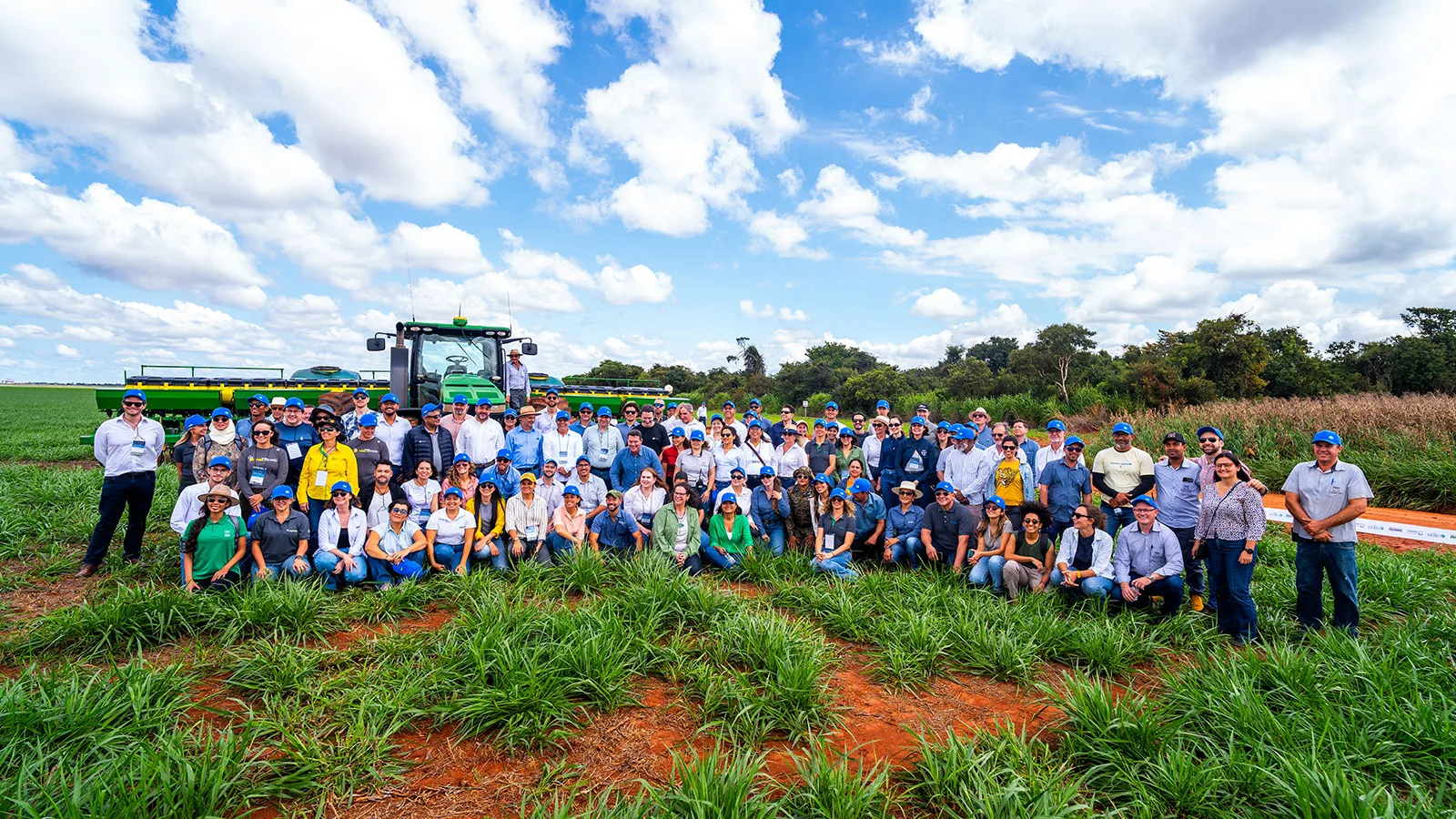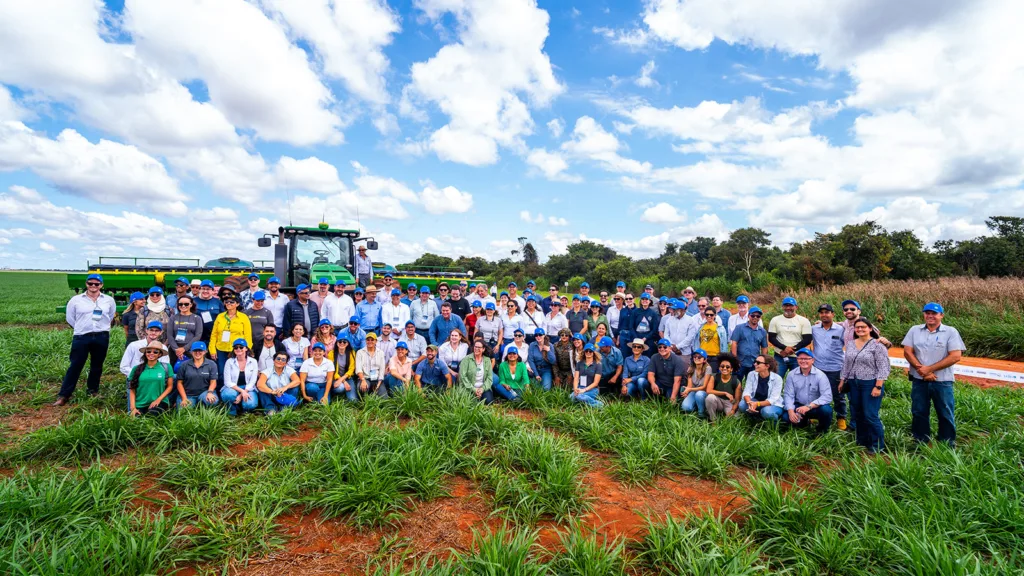Luiz Eduardo Magalhães, Bahia – Brazil
In mid-April, over 150 diverse stakeholders from across the corporate, finance, policy, and agriculture sectors gathered in Bahia for the AARL Cerrado Summit, for two days of dialogue and collaboration towards unlocking the barriers to scaling regenerative landscapes in the Cerrado. The event was co-organized by the World Business Council for Sustainable Development (WBCSD), Boston Consulting Group (BCG) and the Brazilian Business Council for Sustainable Development (CEBDS), in collaboration with the Brazilian Ministry of Agriculture (MAPA) and the Association of Producers from the state of Bahia (AIBA).
As the first official pre-COP30 event held in the heart of the Cerrado region, the summit reinforced the importance of aligning implementation strategies across investment, metrics, and policy, in line with the Brazilian COP Presidency’s push to make COP30 a conference of implementation. This also marked the first in-person gathering of the Landscape Accelerator Brazil (LAB), the first regional accelerator under the Action Agenda for Regenerative Landscapes (AARL) launched at COP28.
The Summit provided the occasion for AARL partners to launch a bold new ambition: mobilizing $3 billion USD by 2030 to accelerate the sustainable transformation of the Cerrado. With attendees bringing wide-ranging perspectives, the energy was high in Bahia and the discussions were detailed and action-oriented towards a common agenda. Field visits to large-scale regenerative row crop production and restoration projects for native vegetation helped to ground the dialogue in local producers’ priorities and practicalities.
Thinking global, acting local
The Cerrado biome – Brazil’s agricultural powerhouse and the world’s most biodiverse savannah – is a key region for scaling regenerative landscapes. This concept focuses on preventing deforestation, regenerating working lands and restoring degraded lands, with measurable outcomes across socioeconomic, climate, water, soil health, and biodiversity dimensions. And Brazil is positioned to be a leader due to its technical expertise, large-scale agricultural production and increasing global demand for sustainable supply chains.
The Secretary of Innovation and Sustainable Development of MAPA, Pedro Neto, highlighted the relevance of the topics discussed during the AARL Cerrado Summit for the action agenda for agriculture and agri-food systems, under development for COP30. ‘The intention of the action agenda is to converge the biodiversity, desertification, and climate agendas, and this event addresses central topics towards COP30.’
Finance: Bridging the investment gap
One of the Summit’s core themes was financing the transition to regenerative models. Participants examined barriers preventing producers from adopting regenerative practices and emphasized the need for blended finance strategies to de-risk investments in the transition. BCG presented an analysis estimating a multibillion-dollar opportunity to restore degraded land and improve productivity through regenerative approaches – highlighting both environmental and economic potential. Their recently released report, developed in collaboration with WBCSD, CEBDS and MAPA, highlighted that transitioning the Cerrado represents a US$55 billion investment opportunity through 2050, with an average 19% IRR.
Key discussion points included:
- Access to finance remains a key barrier, with challenges including high transition costs, market risks, and limited private capital flow to smaller producers.
- Agreement on the need for locally-tailored investment vehicles, building and improving those already existing.
- A bold ambition presented: Aggregation of $3B in blended financing by 2030 for regenerative landscapes in the Cerrado
Investing in regenerative agriculture, is of high importance to the global climate agenda, but above all it speaks to the resilience of the food system and the agricultural production itself […] Transitioning to regenerative agriculture, is paramount to the sustainable growth of the agricultural sector in Brazil.
– Fabiana Alvez – CEO, Rabobank Brasil
Metrics & MMRV: Consistent approaches to track and incentivize implementation
The summit also addressed the need for practical, cost-effective Monitoring, Measuring, Reporting, and Verification (MMRV) systems for tracking progress on implementation and rewarding producers for the generation of socio-economic and environmental co-benefits. Participants converged on the need for standardized indicators that are both relevant and scalable for local realities, drawing on the shortlisted metrics facilitated by the LAB.
Proposed next steps:
- Continue to foster alignment on a set of viable standard metrics for regenerative landscapes in Brazil
- Development of case studies of corporate experiences in MMRV systems implementation with producers in Brazil
- Future pathways: Pilot-testing MMRV approaches on the ground for specific commodities and local contexts
The first thing is to standardize and harmonize protocols. How many different protocols do we have out there today? And that’s okay. Diversity increases resilience. But we need to standardize. And we need to harmonize. Not, homogenize.
– Ludmila Rattis – Researcher, Woodwell Climate, IPAM Amazonia, Fundação Dom Cabral
Public policy: The foundation for system change
Policy was identified as a key enabler for scaling regenerative agriculture. Participants and panelists reviewed current regulatory barriers and explored how Brazil can use its role as COP30 host to position regenerative agriculture as part of its national strategy.
Recommendations included:
- Leverage and expand existing incentive programs such as the low carbon agriculture plan (Plano ABC+ – Agricultura de Baixo Carbono), the National Plan for the Restoration of Degraded Pasturelands (PNCPD) and Floresta+
- Support modernization of the rural land registry system (CAR) as a core pillar of cost-effective MMRV systems at national and state levels
- Strengthening collaborative policymaking processes, including companies, civil society, producers and research institutions.
In the scope of public policy, we have a strong consolidated sector plan, we have a financing policy, we have engaged rural producers with a high degree of entrepreneurship. There is science and innovation available but there are challenges […] The government’s intention is to create … a favorable environment for a sectoral discussion, that is broad, comprehensive.
– Pedro Neto – Innovation and Sustainable Development Secretary, Brazilian Ministry of Agriculture (MAPA)
Toward COP30: A blueprint for action
Looking ahead, the LAB will incorporate the insights from the discussions held at the Summit and leverage the expanded community of partners towards a set of recommendations for scaling regenerative landscapes for delivery by COP30, backed by multistakeholder alignment on investment strategies, partnerships and measurable results.
More broadly, the LAB serves as a compelling template for multistakeholder collaboration on sustainable land-use in tropical contexts; this can catalyze parallel efforts across the tropics and help foster the learning and partnership needed for the large-scale evolution of food systems. In this way the initiative contributes directly to the COP Presidency’s ambition to show how Brazil can be a model for the world in this critical year.
Outline


